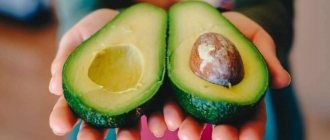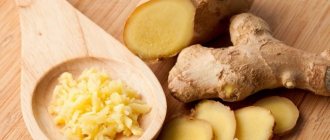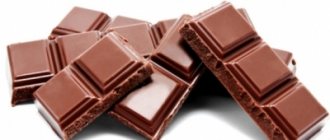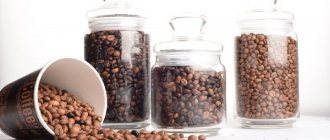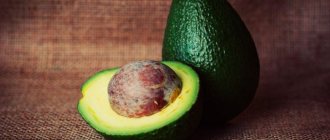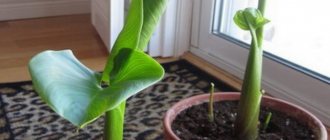Not only honey, but also other bee products have exceptional medicinal properties. Propolis and wax, deadwood and zabrus, pollen and bee bread (breadbread) - all of them are saturated with healing enzymes of little workers and, in combination with their natural qualities, have long been used by humans for preventive and therapeutic purposes. Of particular value is beebread, a unique food for brood prepared by bees with the addition of active substances from their glands and honey.
Bee bread dried, ground, in honeycombs
During the placement process, the flower pollen compacted into the honeycombs is held together by the saliva of insects - this is when valuable enzymes from the bees’ body enter it. When the comb is almost full, a little space is left on top - about 1/5. It is filled with honey. In the honeycomb, pollen begins to germinate, releasing lactic acid - an excellent preservative, which, together with honey, after sealing with wax in the honeycomb, can store bee bread until spring.
During the preparation process, bee bread, in addition to the already existing set of valuable components, is enriched with vitamin E, which is also called the “vitamin of youth.” Bee bread contains almost all vitamins, many essential amino acids, fatty amino acids (including Omega-3), micro and macroelements. Due to this, beebread is used for the treatment and prevention of diseases, for cosmetic purposes, and as an energy drink for athletes.
Important! One of the most valuable properties of bee bread is its 100% absorption by the human body. However, the properties of the bee product may vary depending on storage conditions. And since at the same time there is a change in qualities not for the better, beebread must be stored under optimal conditions. There are several commercial types of bee bread: in honeycombs, ground, dried.
Bee bread in honeycombs: how to store
The preservation of bee bread in honeycombs can be used for two purposes:
- Preparation for use as medicinal raw materials;
- Supply of food for bees for the spring;
In both cases, the beekeeper must comply with a number of requirements so that all useful components of beebread remain unchanged:
- Humidity. Excessive moisture is harmful to any product, especially those produced by bees. Even in a hive, humidity can cause more harm than, for example, lowering the temperature. Therefore, to store beebread, a humidity level of no more than 30% is required. When this indicator increases, there is a risk of mold development, and in a too dry room, beebread dries out and loses some of its healing qualities;
- Temperature. Temperature indicators are no less important to comply with: t should not be higher than +8°C, or better – from +1 to +5°C. A decrease to negative values leads to the freezing of bee bread and, accordingly, the destruction of some useful substances. In a room that is too warm, there is a risk of being affected by moths - and not only wax moths, but also ordinary ones, as a result of which the product becomes unsuitable for consumption;
- Illumination. Exposure to light, and not only sunlight, has a detrimental effect on many substances, including those that make up bee bread.
Important! Most often, frames with beebread are stored in specially equipped rooms, suspended or filled with honey (or covered with powdered sugar). This “preservation” protects against the destructive effects of oxygen. To protect against wax moths, place containers with 75% vinegar essence. And although some believe that beebread in honeycombs has an unaesthetic appearance, nevertheless this particular product is the most natural, although it is stored only until the next harvest.
General conditions for ensuring safety
Bee bread does not lose its beneficial properties for a fairly long period of time - from 12 to 14 months. Of course, subject to a number of requirements. The following is a selection of tips and recommendations on how to properly store beebread:
- Maintain humidity levels. Excessive dampness and excessive aridity are the main enemies of beebread. That is why it is recommended to keep it in storage rooms away from heaters and other heating devices. Suitable humidity is 30-35%.
- Observe temperature conditions. The optimal level is considered to be from zero to six degrees. That is why it is not recommended to keep bee bread in the refrigerator - the temperature in it fluctuates and can drop below 0.
- Choose suitable cookware. Containers made of high-quality thick glass increase shelf life. Please note that the volume of the vessel should be no more than 0.5 liters.
These are general recommendations that will ensure the safety of the product.
beebread in honeycombs
In what form is it better to store bee bread?
It was already mentioned above that the shelf life of bee bread is determined by its type (in honeycombs, in granules, etc.). But which variety is most convenient in everyday life? We will try to answer this question further.
In the form of a paste. This option involves mixing bee bread with natural liquid honey until a consistency similar to a paste is formed. Beebread grains are passed through a meat grinder or blender, diluted with sweet nectar in a ratio of three to one and mixed thoroughly.
Honey with beebread. The honey paste is poured into a sterile container (the best option is glass, but plastic containers are also acceptable). Cover the container with a thick cloth or an airtight lid. Place in a storage room or any dry room.
The mixture can be consumed immediately after preparation. Its course use is an effective prevention of seasonal colds and viruses.
In honeycombs. This method allows you to protect beebread from chapping and preserve its healing properties.
Step-by-step instructions on how to store bee bread in honeycombs:
- Wax honeycombs are a very delicate beekeeping product that is difficult to store at home. You can increase their shelf life only by cutting them into small squares, putting them in a glass jar and filling them with natural honey (it is best to use May or linden honey).
- The jar is closed with a tight lid and put away on the bottom shelf of the refrigerator - in the vegetable department.
- Nearby is a bowl with a solution of water and nine percent vinegar.
This product should be taken together with honeycombs.
In the form of granules. Granulated bee bread is strictly prohibited from being stored in the refrigerator. Instead, it is placed in a cool, dry room, protected from direct sunlight. The best option is a storage room or hallway. It is better to avoid basements and cellars, since there is a high risk of mold and fungal diseases developing there.
Shelf life of ground bee bread
Grinding beebread honeycombs in a meat grinder and adding honey to them - approximately 25-30% - can increase the biological value of the product and at the same time create optimal conditions for storage.
Store this product in a dark glass container, tightly sealed. The temperature conditions remain the same - in a dry and cool room, preferably without access to light. Maintaining all quality indicators increases the shelf life of bee bread in this case to a year. In the refrigerator at normal temperatures, bee bread paste can only be stored in a tightly sealed container, since the humidity levels in the refrigerator compartment are higher than required for storing bee bread.
Important! Although the safety of ground bee bread with the addition of honey is high, the disadvantages of this method are: the possibility of allergic reactions due to the honey content (beebread itself is a low-allergenic product), low content of bee bread specifically, as well as its unknown concentration.
Signs of product spoilage
If mold appears on the surface, you will have to stop using this product. The texture of the bee bread should be crumbly, resembling hexagonal grains. They are dark in color with minor light fragments.
It is important that the product does not contain excess moisture. To do this, it is recommended to squeeze a handful of the substance in your hand. If a lump appears, it can be concluded that the product is not of sufficient quality. This will lead to a significant reduction in shelf life.
Bee bread: shelf life in granules
There is another way to prepare bee bread for use: in the form of granules extracted from honeycombs and dried. It is the most labor-intensive, which is why it costs the most. However, it has one undoubted advantage - the ability to accurately dose the drug when taking it. And since beebread has high levels of biogenic activity, the issue of proper administration with precise adherence to doses comes to the fore:
- Dry granules of small size (up to 1.5 cm) are thoroughly cleaned of wax and dead particles and dried;
- The dried product is stored in a glass container, open or covered with canvas fabric in 1-2 layers;
- Humidity should not exceed 25%, and 10% is optimal. These conditions must be met, since even a dried product contains a certain percentage of moisture.
The temperature requirements are not so strict, since the almost complete absence of moisture makes the product the most stable. Even in hot conditions, beebread will only dry out slightly and lose weight. However, all valuable components in the dry matter will be retained.
Important! Granulated bee bread is the most convenient, safe, although more expensive type of bee bread. But even in this condition and if all requirements are met, it is recommended to store bee bread for no more than a year.
Common Mistakes
When storing bee bread, many people make common mistakes:
- place the product in non-airtight packaging;
- do not comply with temperature parameters;
- ignore optimal humidity levels;
- expose the product to ultraviolet radiation;
- store the substance in large volumes.
In order to preserve the freshness of beebread for a long time, it is worth providing it with suitable conditions. It is recommended to monitor temperature and humidity indicators. The beekeeping product must be kept in a dry, well-ventilated area. It is recommended to keep it in a dark place.
How to use bee bread correctly
To get the maximum benefit from taking a valuable bee product, you must carefully follow the recommended doses, and also study possible contraindications. Bee bread has very few of them, since it is the lowest allergenic among all beekeeping products. And it is even used to treat allergies.
The main contraindication is individual intolerance. Therefore, they begin taking it with a minimum dose, carefully monitoring the body’s reaction. For some pathologies (oncology, uterine fibroids, increased anxiety, Graves' disease), it is recommended to take bee bread only after consulting a doctor. Standard dosage regimen:
- Average doses for treatment – 1 tsp. shortly before or after (depending on indications) a meal. The course of treatment is 1 month, then a month break and repeat if necessary. If you are not sure about the correctness of your actions, visit an apitherapist;
- For the purpose of prevention, administration is carried out in half doses, and its duration is 15 days in the spring and autumn periods. Some additionally carry out prevention in winter;
- Children are given bee bread in greatly reduced doses - 0.25 of the adult norm, and a mandatory medical consultation is carried out regarding the age limits;
- A portion of bee bread is dissolved in the mouth without drinking anything, and after taking it, do not drink or eat anything for another 30 minutes.
If all conditions are met, the shelf life of bee bread does not exceed 12 months. And although it can be stored longer, the medicinal properties of such a product are questioned, and the effect of taking it is minimal.
